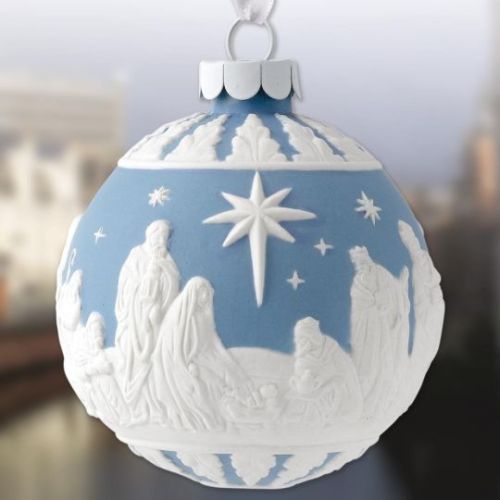#nativity
ADVENT CALENDAR DAY 7
Lampshade panel illustrating the Visitation of the Shepherds, made in the late 1930s or early 1940s. Glencairn Museum, Bryn Athyn, PA, 11.OP.02.
This handcrafted lampshade panel illustrates the Visitation of the Shepherds. According to the Gospel of Luke, “So it was, when the angels had gone away from them into heaven, that the shepherds said to one another, ‘Let us now go to Bethlehem and see this thing that has come to pass, which the Lord has made known to us’” (2:15).
The panel is one of six scenes from the Nativity narrative decorating a Christmas-themed lampshade in Glencairn’s Chapel. The plexiglass shade was commissioned by Raymond Pitcairn in the late 1930s or early 1940s; it was designed and painted by Francis (“Frank”) Eugene Snyder (1908–1995). Synder painted the plexiglass with oils and other media in order to achieve the appearance and texture of stained glass when the lamp is turned on.
Every day, from December 1 through December 25, a new work of Nativity art from the Glencairn Museum collection will appear on the home page of our Advent calendar (Follow the Star: A 2021 Advent Calendar. To receive these in your newsfeed, follow our social media (Facebook, Instagram, Twitter, Tumblr).
Post link
ADVENT CALENDAR DAY 6
Stained-glass roundel of the Annunciation to the Shepherds made in 13th-century France. Glencairn Museum, Bryn Athyn, PA, 03.SG.240.
This 13th-century stained-glass roundel illustrates the biblical story of the Annunciation to the Shepherds (Luke 2:8–14). Here an angel with green wings and a purple cloak descends from a heavenly cloud, announcing to the shepherds that they will “find a babe wrapped in swaddling cloths and lying in a manger.”
According to Professor Michael W. Cothren, “Medieval artists commonly used a wavy, arching band of clouds (frequently placed across the corner of a rectangular composition) to show a separation between the earthly realm below and the heavenly realm above. For example, when a disembodied hand of God emerges from heaven to command or bless a situation taking place on earth, it is often overlapped by an arching band of ‘clouds of heaven.’ Sometimes the face of God appears within the cloud band. Sometimes angels swoop down toward earth underneath or emerging from the clouds.” (“The ‘Clouds of Heaven’ Motif in Art Created for Glencairn,” Glencairn Museum News No. 1, 2021).
Every day, from December 1 through December 25, a new work of Nativity art from the Glencairn Museum collection will appear on the home page of our Advent calendar (Follow the Star: A 2021 Advent Calendar). To receive these in your newsfeed, follow our social media (Facebook, Instagram, Twitter, Tumblr).
Post link
Like a radiant star doth Stephen the protomartyr shine forth on the Nativity of Christ, illumining and enlightening the ends of the earth, but casting a pall of darkness over all the impiety of the Jews. Reproving them with words of wisdom, discoursing from the Scriptures, and persuading them that Jesus, Who was born of the Virgin, is the Son of God, the godly protomartyr Stephen put to shame their impious wickedness.
“Dejlig er den Himmel blå”
A peaceful middle eastern night… I’ve always loved the idea of following the north star to find solace
Post link
10 things that Pope Francis wants us to learn from the nativity scene
The nativity scene contains a call to service. The pope says that the Christmas crib contains an implicit message. “It summons us to follow Him along the path of humility, poverty, and self-denial that leads from the manger of Bethlehem to the cross,” he writes. “It asks us to meet Him and serve Him by showing mercy to those of our brothers and sisters in greatest need.”





